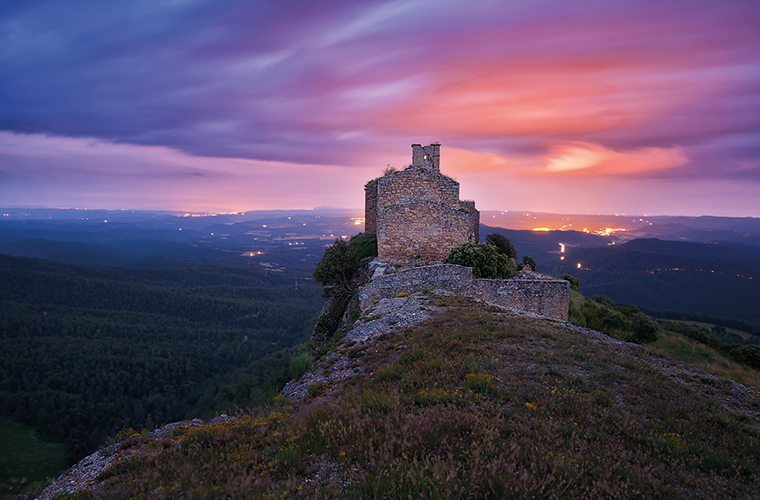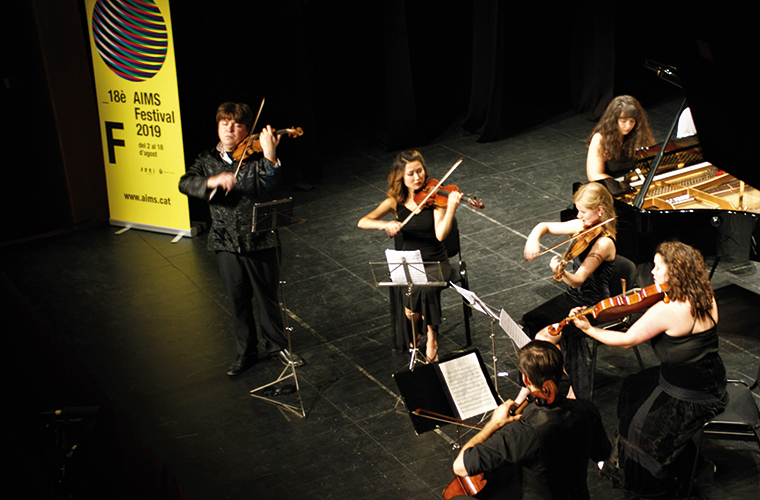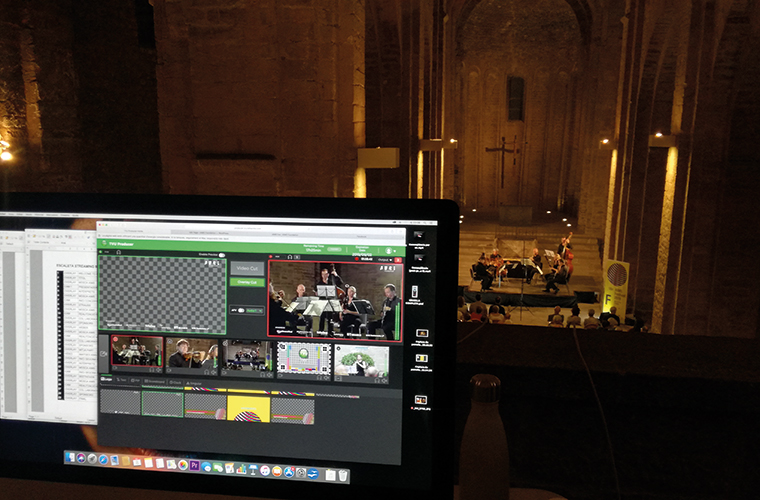Classical Catalonia

Classical music non-profit AIMS livestreams its annual music festival using TVU Networks to increase awareness
Solsona in Spain is famed for its ‘matarucs’, otherwise known as donkey killers. It’s a name given to townspeople following a tradition that involved hoisting a donkey by the neck up to the town’s bell tower – yikes!
But, post donkey-dangling, Solsona is now home to more cultured activities, encouraged by the Acadèmia Internacional de Música de Solsona (AIMS). Established 17 years ago, AIMS’ aim is to encourage education in the field of classical music, hosting masterclasses for talent across the globe in August each year. The outcome of this tutelage is a pedagogical music festival, which takes place over 18 days in 16 municipalities and eight counties in the central Catalonian region around Solsona.
In keeping with it’s goals, the festival is inclusive. Concerts take place in an array of churches and theatres, out on the street, and are made accessible to those not able to attend. Founder and artistic director of AIMS, Peter Thiemann, explains: “Our slogan is, if you can’t come to us, we will come to you. So, we have ticketed concerts held inside the beautiful Romanesque buildings of Catalonia and we have public concerts held outside the front of the Cathedral of Solsona, but we will also go to the homes of the elderly or disabled and play for them at no cost.”
Going global
Taking this ideal of ‘coming to you’ a step further, this year AIMS made the decision to do a live broadcast of two of its concerts: one a teachers’ concert at Cardona’s Collegiata Church, the other a students’ concert at the Theatre of Solsona, which was the closing gala for the 2019 AIMS music festival. Both were livestreamed to Facebook, YouTube and AIMS’ web page.
Since AIMS is a not-for-profit organisation, the opportunity to bring its musical festivities to anyone, anywhere in the world, came as a gift. Thiemann says: “In order to make this festival happen each year, we have to fundraise, and we do this through the Friends of AIMS, which is another not-for-profit organisation that we founded in 2016 in California. We have some private sponsors in the US, so we go there once a year to do fundraising concerts – and it was through one of these concerts that we met the CEO of TVU Networks, who suggested doing a livestream of the AIMS music festival.”
He continues: “Obviously, I said yes. Our students come to Solsona from numerous different countries and this year that number was 22. So, the opportunity to bring our festival activities to the families and professors of those students, who could be anywhere in the world, was a gratifying experience.”
AIMS had previously video recorded its music festival for digital distribution after the event, but this was its first experience in doing a live stream. It used TVU Network’s TVU Producer, a cloud-based mixer supporting live multi-camera capture, graphics and delivery. David Jorba, CEO of TVU Networks, describes the system as ‘self-serve’ and ideal for an organisation that had not previously dabbled in live event production.
the venues were really nice, but not the best places to put a cellular transmitter
Jorba says: “We did provide some assistance, though that was more to do with the transmission. AIMS wanted to have different cameras in the different events transmitting to our TVU Producer, which enables you to bring up four live feeds, but because AIMS had never used transmitters before, it took a little bit of time setting up. He continues: “A transmitter is a little box containing sim cards (cellular connections) that connect to the SDIs from the cameras.”
Style over connectivity
While admirable, Thiemann’s decision to live stream the concerts from the Theatre of Solsona and Cardona’s Collegiata Church proved tricky. Mostly because 21st century internet connectivity was not considered during the design of these old buildings’ thick stone walls. Thiemann explains: “I made this decision as an artistic director and not as a technician because I’m not a technician. I wanted to show the world what it is that AIMS does and in doing so, we ran into some technical difficulties.”

AIMS used TVU Networks’ technology to take their outreach aims global, providing classical music for anyone, anywhere
Jorba laughs: “The venues were really nice in terms of look, but they were not the best places to put a cellular transmitter.So, to ensure a good signal, we used a technology called Arius Plus, which aggregates all sorts of connectivity data, including Wi-Fi, SIM cards and Ethernet, and we added as much of this as we could to our transmitter boxes. We also placed a single TVU router outside each of the buildings to connect to the transmitters inside, because if you use a router to manage bandwidth, you can actually double it. And having a router outside the building that’s connected to a transmitter inside is like having an antenna – it enables you to capture more bandwidth and bring that inside the building.”
It was not just the students who gained valuable experience. Overcoming these technical constraints forced TVU Networks to think outside the box (literally) and AIMS got acquainted with live production and broadcast technology.
“We learned that it’s good to use routers to provide additional bandwidth when dealing with cellular network transmissions,” says Jorba. “We also got to know our TVU Producer a little better. AIMS got to grips with it really quickly and were able to switch between cameras, add graphics and output the live content without our help. It made us realise that our TVU Producer can be used in other events such as corporate, not just in digital or broadcast media, which is what it was designed for.” TVU Networks plans to work with AIMS again for its music festival next year.

“AIMS is a not-for-profit organisation, so we didn’t do this for money. We did it because we wanted to, and we did a good job. Maybe next time we will live stream from more venues. But it all depends – each production is unique, and you have to adapt to the ever-changing environments. You never know how many people are going to be there and what the internet connectivity is going to be like.”









